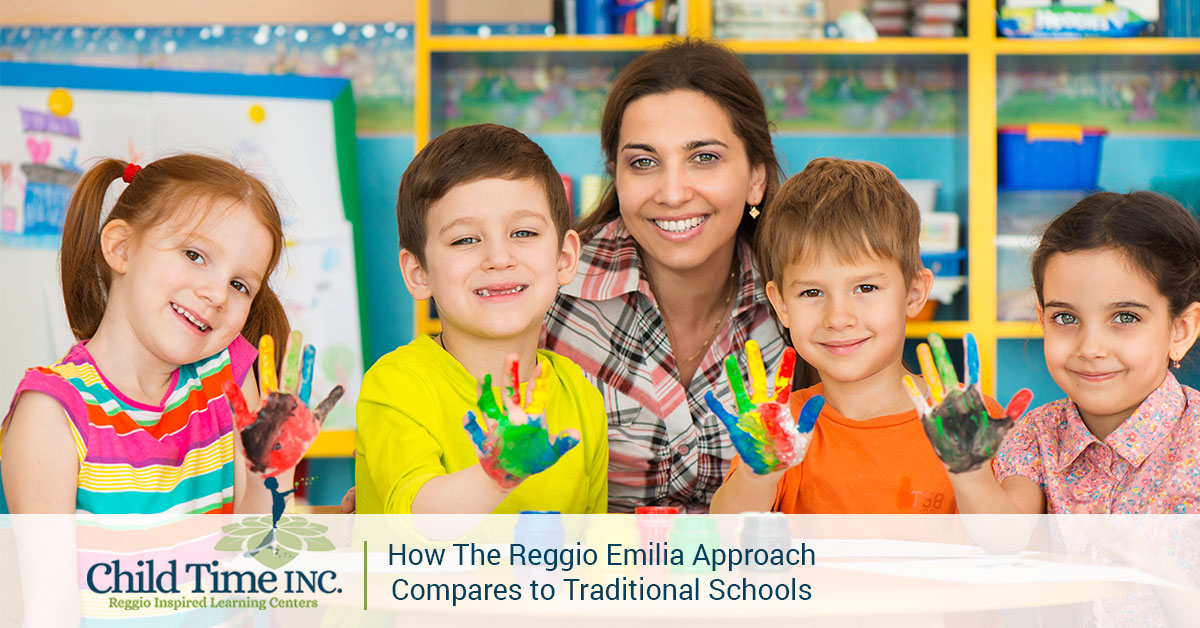 Choosing a school for your child is one of those decisions that can seem overwhelming to parents. Child Time in Salt Lake City utilizes the Reggio Emilia curriculum to help your child learn and grow into a great citizen. But how does this approach differ from other schools? While there are many different
Choosing a school for your child is one of those decisions that can seem overwhelming to parents. Child Time in Salt Lake City utilizes the Reggio Emilia curriculum to help your child learn and grow into a great citizen. But how does this approach differ from other schools? While there are many different
approaches to school, we will focus today on how the Reggio Emilia approach differs from traditional schools in how the teacher and child are viewed, and the goals of education.
Citizens
A cornerstone of the Reggio Emilia approach is helping children to become better citizens. This philosophy was born out of a collaboration between schoolteacher Loris Malaguzzi and the community Reggio Emilia, a town in northern Italy. There is a strong focus on group work and projects, further reinforcing the importance of working together and conflict resolution. Parents are also encouraged to become active participants, partnering with teachers and children to enhance learning. The roots of the Reggio Emilia approach lie in community and collaboration, so it is no surprise that developing good citizens is at the heart of this form of schooling.
Teachers
The role of the teacher is very different in the Reggio Emilia approach. While traditional school sees the teacher as the center of the classroom, Reggio Emilia views the teacher as a co-learner to the students. In this approach, the students and teacher are working together to explore, learn, and find answers and solutions, rather than the teacher merely facilitating the transmission of knowledge to the students. The teachers are no longer the sole dictators of the curriculum or areas of interest, rather they partner with the children to explore topics that are of interest.
Children
In the Reggio Emilia approach, children are seen as strong, resourceful individuals that are capable of determining their own areas of study and interest. This is in sharp contrast to traditional schools, where children need to absorb preplanned information that is delivered by the teacher. The Reggio Emilia approach encourages exploration and the children initiates projects that interest them.
Classroom
The classroom in a traditional school is merely the space that the students and teachers occupy to have lessons and learn. But in the Reggio Emilia approach, the classroom takes on much more meaning, and is seen as the “third teacher”. The physical environment in which children learn is of utmost importance, and needs to foster community and exploration. In a traditional school setting, each classroom is independent and separate. The Reggio Emilia approach thinks of every classroom as integrated into the school as a whole.
Schedule
Traditional schools adhere to rigid schedules and activities are usually done the same way and at the same time. The Reggio Emilia approach takes a much more child-centered approach, with kids exploring topics that interest and excite them, not what is dictated on a curriculum.
Documentation
Everyone loves seeing their kid’s work, but Reggio Emilia puts a special emphasis on the documentation of a child’s learning and growth throughout the year. Videos, photos, and written observations by teachers are kept as tangible representations of learning. Both children and teachers can review what has been done during the year.
As you can see, the Reggio Emilia approach is very different from that of traditional schools. If the ideaof child-initiated learning excites you, contact Child Time today to find out more about our programs!


